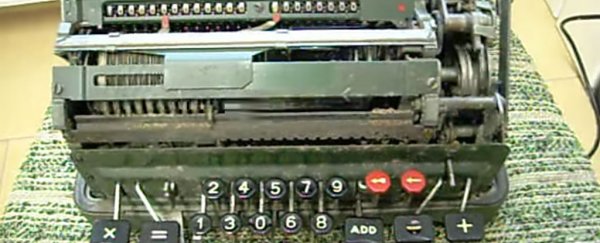Remember back when you were first learning multiplication and division? One of the weirdest rules your teacher probably tried to drill into your head was that you can't divide by zero, but they likely never explained why in too much detail. In short, it's because the answer is infinity (sort of), which is why your calculator displays an error when you try it. But when you type it into a mechanical calculator, the device starts to look a whole lot more like an engine revving to life than a computational tool. Check it out in all its old-timey glory above.
So what's going on here? According to Eric Limer from Popular Mechanics, the calculator multiplies and divides by basically subtracting and adding. When you think about it, division is just sequential subtraction, as explained in the Numberphile video below.
For example, if you have divided 15 by 3, you'd just keep subtracting 3 from 15 until you reach zero, and then count how many times you did it. For 15 divided by 3, you obviously get 5.
So, following that logic, the calculator tries to do the same thing with zero. But it never works out, because if you take 20 and divide it by zero, you get zero, which starts the process over again. Since the computer is trying to do its job, it will continue trying forever. In other words, dividing by zero on an old, mechanical calculator causes a horrifying, infinite loop.
But as Numberphile explains, dividing by zero is even more complicated than that, because it entails so much more than just trying to divide by infinity.
There are a tonne of strange results you can come up with when you try to calculate zero division, such as answer where 1 equals 2. It sounds illogical, but that's because zero, as a number, works according to a different set of rules, and infinity cannot be represented completely in a numeric form.
So maybe when the robotic overlords take over our planet, we can overthrow them by tricking them into dividing by zero. It's the stuff that Hollywood movies are made of.
